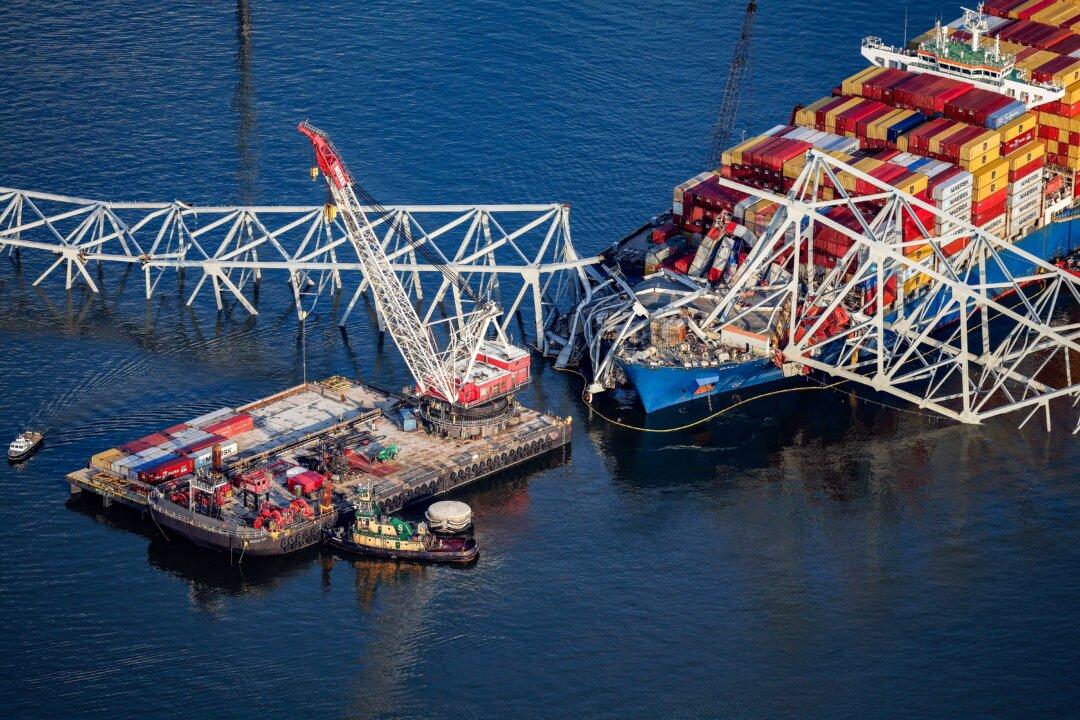Investigators have found a loose cable that may have caused electrical issues on the Dali cargo ship, which lost power and veered into Baltimore’s Francis Scott Key Bridge in March, causing the bridge to collapse.
When disconnected, the cable triggered an electrical blackout on the 984-foot-long, 95,000-ton vessel, according to new documents released on Sept. 11 by the National Transportation Safety Board (NTSB).





